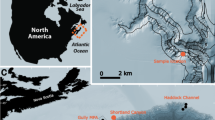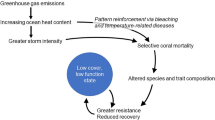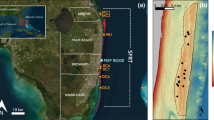Abstract
CAPTAIN WHARTON in his interesting paper satisfactorily explains a condition of reef-growth previously little known and but imperfectly understood. I was pleased to learn that Mr. Bourne's long-expected account of Diego Garcia will soon be published. His remarks concerning the directing influence of currents agree closely with those of Semper (“Animal Life,” vol. xxxi. Internat. Sci. Ser. p. 228). Of the importance of this agency there can, I think, be no doubt; but solution is also an important agency within the lagoon, and one more capable of actual demonstration than the directing force of the currents. But amongst the supporters of the anti-subsidence theory of Murray there is a difference of opinion as to the relative importance to be attached to solution; and we cannot accept the name of “theory of solution” for the new view if it is intended to exclude the other agencies that previously cause the death of the coral, such as the repressive influence of sand, the diminished food-supply, the tidal scour, &c. With this exclusive meaning, the name “theory of solution” would contradict itself, and we should be regarding the problem in much the same light as if we were solely to contemplate the mystery of our own existence from the point of view of the undertaker.
This is a preview of subscription content, access via your institution
Access options
Subscribe to this journal
Receive 51 print issues and online access
$199.00 per year
only $3.90 per issue
Buy this article
- Purchase on SpringerLink
- Instant access to full article PDF
Prices may be subject to local taxes which are calculated during checkout
Similar content being viewed by others
Rights and permissions
About this article
Cite this article
GUPPY, H. Coral Formations. Nature 37, 462 (1888). https://doi.org/10.1038/037462b0
Issue date:
DOI: https://doi.org/10.1038/037462b0



